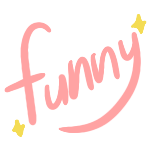Who’s really stuck on design? Ideas stuck, inspiration lost, and somehow everything you make feels… meh? Welcome to the club! Artblock can be frustrating, but don’t worry – it’s not the end of your creative journey. Let’s explore together how to get your creative mojo back!
What is Artblock?
Artblock is not just “male” or “no ideas”. It’s like your creative batteries are drained! This condition is normal for all creative people, from newbies to professionals. Think of it as your brain’s way of saying “I need a reset!”
Common Causes of Artblock
There are many things that can trigger artblock:
- Exhaustion from a plethora of projects
- Excessive perfectionism
- Comparison syndrome (lots of social media scrolling!)
- Personal issues that affect creativity
- Routines that are too monotonous
Impact of Artblock on Creativity
Artblock can impact various aspects of your creative life:
- Decreased productivity
- Increased self-doubt
- Frustration with your own work
- Loss of enjoyment in creating
- Decreased motivation
Mental Reset Strategy
Mindfulness and Self-Care
Your creative mind needs TLC (Tender Love and Care):
- Take regular breaks
- Practice deep breathing
- Journaling thoughts and feelings
- Get enough sleep
- Eat well and stay hydrated
Reframing Perspective
Sometimes you need to change the way you look at things:
- Treat artblock as an opportunity to grow
- Focus on the process, not the outcome
- Embrace imperfections
- See mistakes as learning experiences
Breaking Down Mental Barriers
Identify and overcome mental blocks:
- Challenge negative self-talk
- Set realistic expectations
- Remove the pressure to be “perfect”
- Allow yourself to experiment
Meditation for Creativity
Meditation can help clear your mind:
- Practice mindfulness meditation
- Try guided visualization
- Do creative meditation exercises
- Use a meditation app
Practical Ways to Overcome Artblock
Take a Creative Break
Sometimes the best way to move forward is to step back:
- Take a day off from design
- Do something completely different
- Explore another hobby
- Give yourself permission to take a break
Explore New Environments
A change of scenery can spark creativity:
- Work from a different location
- Visit an art gallery or museum
- Explore a new neighborhood
- Travel if possible
Exercise and Physical Activity
Moving your body can open your mind:
- Go for regular walks
- Try yoga or stretching
- Dance freely
- Do a physical activity you enjoy
Creative Exercises and Games
Make creativity fun again:
- Doodle aimlessly
- Try a quick sketching challenge
- Play with color palettes
- Experiment with new tools
Techniques for Finding New Inspiration
Digital Detox dan Offline Exploration
Sometimes you need to disconnect to reconnect:
– Take breaks dari social media
– Explore analog techniques
– Read physical books dan magazines
– Practice traditional art methods
Cross-Disciplinary Learning
Inspiration can come from unexpected places:
– Learn new skills outside design
– Study different art forms
– Explore other creative fields
– Combine different disciplines
Nature as Inspiration
Let nature spark your creativity:
– Observe natural patterns
– Collect natural objects
– Photograph interesting textures
– Sketch outdoors
Cultural Immersion
Dive into different cultures:
– Experience local arts
– Attend cultural events
– Study traditional designs
– Learn about different aesthetics
Rebuilding Creative Habits
Setting Realistic Goals
Start small dan build up:
– Set micro-goals
– Create achievable targets
– Focus on progress, not perfection
– Celebrate small wins
Creating Daily Routines
Establish supportive habits:
– Morning creative exercises
– Regular design practice
– Evening reflection
– Weekly review
Building Support System
You don’t have to do it alone:
– Join creative communities
– Find accountability partners
– Share struggles dan successes
– Give dan receive feedback
Tracking Progress
Monitor your creative journey:
– Keep a design journal
– Document your process
– Note improvements
– Reflect on challenges
Remember, artblock isn’t forever! It’s just a temporary phase dalam creative journey kamu. Instead of fighting it, use this time untuk rest, reset, dan rebuild your creative energy. The key is being gentle with yourself while gradually finding your way back to your creative flow. Your creativity isn’t gone – it’s just recharging!
Q: How long does it take to get good at design?
A: It varies! But with consistent practice, within 3-6 months you can create decent designs. Remember: it’s not a race, it’s a journey!
Q: What software is better to start with for beginners?
A: Canva is a great starting point because it’s user-friendly. Once you are familiar with the basic principles, you can move to Figma or other professional software.
Q: Do you need an expensive design course to become a designer?
A: Not necessarily! There are many quality free resources on the internet. The important thing is consistency of learning and practice.
Q: How to define your own design style?
A: Experiment with various styles, observe what resonates with you, and gradually develop your unique style through practice and exploration.
Q: Tips to fight art block when designing?
A: Take breaks, look for fresh inspiration, start with sketches, or try new techniques. Sometimes, stepping away from the project for a while can bring fresh perspective!

